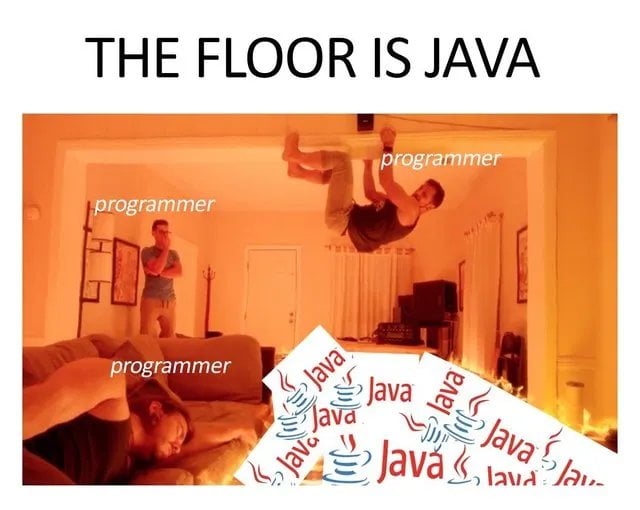Why is Java so dumb?
Java’s data types, wrapper classes, and concurrency helpers look excessive until you see the trade-offs they unlock.
On this page
Clarification: This piece is tongue-in-cheek. It’s aimed at Java beginners who find the language’s complexity frustrating or intimidating. The punchline is that Java isn’t dumb—its quirks are intentional trade-offs that unlock serious power.
You’ve learned some JavaScript, or maybe even some Python, and you’re beginning to think, “This programming thing is not so bad.” Then you have the terrible misfortune of seeing your very first Java code. Like most people, your reaction is perfectly reasonable: run. Or, if you’re averse to sprinting, maybe you quietly wish you had scheduled that colonoscopy instead.
But if we look at a few examples of Java code and unpack the rationale behind its choices, the language starts to feel a little less scary.

What exactly does Java do well?
So where does Java shine? There has to be something, right?

Why yes, it does!
- Big applications: really, really ridiculously big applications.
- Fast applications: maybe not C++ fast, but faster than the average bear.
- Cross-compatibility and backward compatibility: no, those aren’t yoga poses.
- Multi-threading and parallelisation: stay tuned.
If you’re early in your programming journey, those strengths might not feel relevant yet. That’s okay. Understanding what Java optimises for makes its design choices feel far less arbitrary.
What’s with all the data types?
Java offers a buffet of primitive data types for a reason: flexibility and optimisation. Sure, you can get away with int for whole numbers and double for decimals most of the time. But when you’re operating at scale, short, long, float, and friends let you fine-tune for space and performance.
A
shortis only 2 bytes, while bothlonganddoubleare 8 bytes. When you’re storing billions of values, those differences are enormous.
For comparison, JavaScript stores every number in 8 bytes no matter what. That simplicity is nice until you care about memory usage.

Wrapper classes
Primitive types are great, but sometimes you need them to behave like objects. Enter wrapper classes such as Integer, Short, Double, and Boolean. They add handy static methods and can represent null, which is invaluable when you’re working with databases, APIs, or optional values.

However, when programs juggle huge amounts of data, primitives are faster. A
List<Integer>can’t compete with anint[]. Everyday code might not care, but at scale the difference matters.
Atomic what?
If your brain hasn’t already exploded, let’s sprinkle in some concurrency. Atomic classes—AtomicInteger, AtomicBoolean, AtomicLong, AtomicReference, and friends—ensure that shared data changes happen one at a time.
Think of a single-serve restroom. Anyone can use it when it’s free, but only one person can lock the door at a time. Atomic classes do the same thing for your shared variables so threads don’t trip over one another.

BigInteger and BigDecimal
Java also ships with classes for astronomically large or perfectly precise numbers. BigInteger and BigDecimal aren’t academic curiosities—they’re essential when you need accuracy down to the cent.
Computers store numbers in base-2 (binary), while humans think in base-10 (decimal). That mismatch makes precise decimal maths tricky, especially in finance. BigDecimal keeps everything exact, which is why serious money code leans on it.
The takeaway: if you’re programming anything related to finance, use
BigDecimal. Don’t say I didn’t warn you.
While much more could be said about Java’s data types, wrapper classes, and concurrency helpers, hopefully you can see why there are so many of them. You won’t need every single tool all the time—some you may never touch. But when you encounter the problem each one was created to solve, you’ll be glad it’s there.
Endnotes
- The atomic-class analogy is a simplification. Java concurrency is notoriously tricky, so consider this a friendly entry point.
- In practice, you’d reach for specialised libraries in finance, but under the hood they lean on these very same data types.